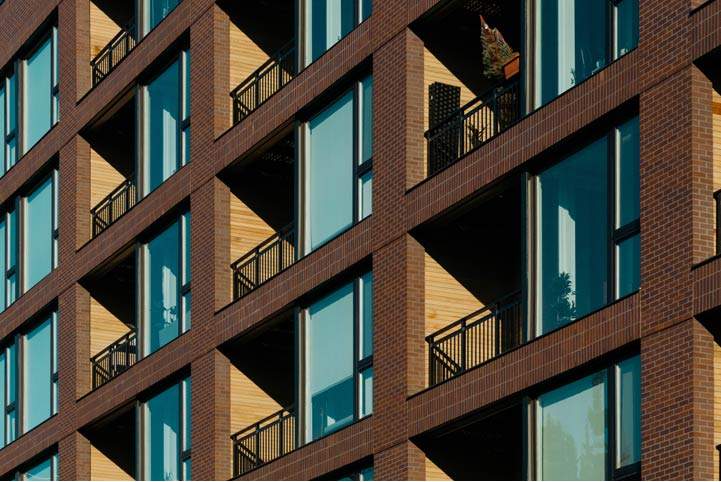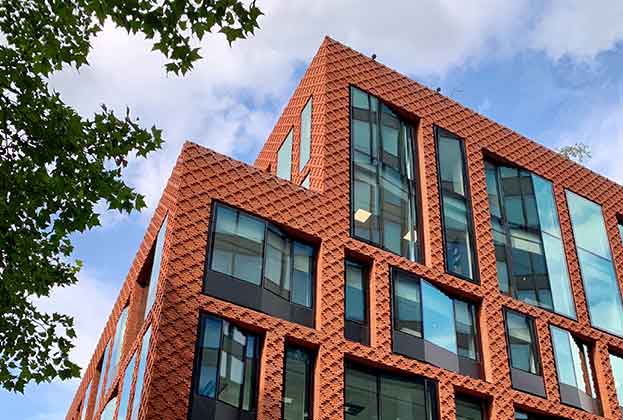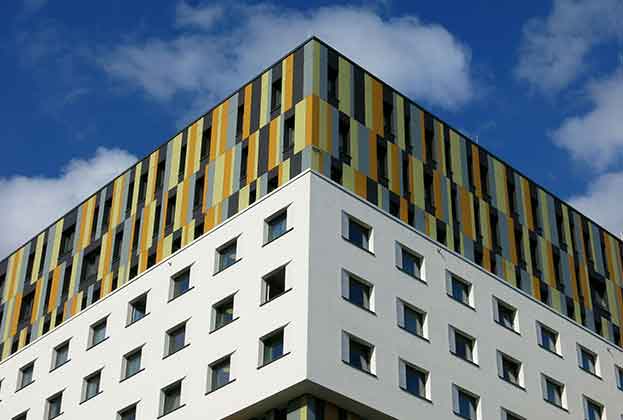The new economic conditions brought about by the Covid-19 pandemic bring challenges for operational residential real estate, but the sector remains more resilient than most
Operational residential sectors, whether multifamily, student or senior living, have experienced significant growth globally over the past five years. Demographic trends such as urbanisation and an increase in household numbers, the desire for flexible living, increased mobility and affordability constraints in the sales market have driven demand from renters. Interest from global investors in these operational residential asset classes has increased considerably as a result.
For investors, these assets have provided the opportunity to diversify away from more traditional real estate sectors, and to receive secure income streams. Investment volumes in the sector increased by 58% from 2014 to 2019, compared to just 21% for all real estate investment.
The world now looks a very different place as a result of Covid-19. Travel restrictions and social-distancing measures are the new norm for the foreseeable future. The pandemic has also brought economic challenges as business activity has slowed.
The impact has not however been felt equally across all real estate asset classes. Operational residential real estate has proven relatively resilient to date. Housing is a basic need – people still need a place to live during an economic downturn. The demand for rental housing can even rise during periods of uncertainty, should stricter lending criteria slow demand in the sales market.
Unemployment: a global comparison
The multifamily sector is most attractive at times of economic growth, when employment prospects improve and wages rise. This makes rent increases easier for tenants to absorb. However, the Covid-19 pandemic has caused a rise in unemployment and created an uncertain jobs market in many countries around the world.
Lots of national governments have implemented furlough or similar job retention schemes, which have so far prevented the full impact on jobs being realised. Once these schemes end, unemployment levels are expected to rise further. The ability for rental growth will be more limited in such an environment.
The target market for many multifamily developers, higher-earning professionals, has to date been less susceptible to disruption to employment as a result of Covid-19. In the UK, for example, employees in the accommodation and food services and arts, entertainment and recreation sectors saw the highest share of total employments furloughed. By comparison, finance & insurance stood at just 3% as of August 2020.
Global unemployment rates and forecasts
The effects of Covid-19 were felt fastest in the US, where the jobs market is particularly flexible and reactive. Here, unemployment rose quickly in the early stages of the pandemic, up to 13.0% in Q2 2020 from 3.8% in Q1 2020, according to Oxford Economics data. Unemployment has since fallen, as lockdown measures have eased and economic activity resumed. It stood at 8.4% in August 2020, according to the US Bureau of Labour Statistics.
Unemployment rates in Europe have risen more gradually, with furlough schemes introduced in some countries. The UK’s furlough scheme has been extended to March 2021, with employees receiving 80% of their current salary for hours not worked. In other European countries, such as Germany and France, the schemes have been extended until the end of 2021.
In Asia Pacific, Australia entered its first recession in nearly 30 years as a result of the pandemic and unemployment is forecast to rise in a similar pattern to European countries. By comparison, Japan has been less severely impacted by the pandemic and their unemployment rate is anticipated to remain low by international standards. China is expected to see unemployment return to pre-pandemic levels by the second quarter of 2021.
What do the early signs tell us?
Evidence from European operators is positive. Grainger, the UK’s largest listed residential landlord, reported rent collection of 95% in September, while occupancy dropped to 91% compared to 97% a year earlier. Savills UK Residential Management team report that the multifamily (Build to Rent) portfolios over 3,000 units under their management achieved 97% rent collection in Q3 2020.
Vesteda, an institutional residential investor in the Netherlands, also reported a limited negative impact on occupancy in their half-year report. Occupancy stood at 97.5% as of June 2020 compared with 98.1% at the same point the year before.
In the US, a survey by NAREIT (National Association of Real Estate Investment Trusts) found that rent received for multifamily assets fell to 93.8% of normal levels in April – the initial period of the pandemic. As economic activity increased along with the easing of lockdown restrictions, the ability of tenants to meet their rent obligations also increased. As of September, the share of typical rent received for multifamily assets stood at 95.7%.
Looking ahead, the forecast weaker economic environment may create more sensitivity to a rise in rent levels. Affordability will be key and the multifamily sector will need to adapt to this. Diversifying the product offering to meet a greater range of price points might need to be considered.
Rental affordability
The new economic realities brought about as a result of Covid-19 mean rental affordability will be more important going forward. The amount that people are able to spend on rent varies significantly by geography.
Assuming the absolute maximum amount households can spend on rent is 30% (the traditional ratio to measure affordability according to a report by the UK’s Affordable Housing Commission) of household income, we can see how affordability varies for the top 100 cities in Europe ranked by average household income (see map, below).
Cities in Luxembourg and Switzerland rank the highest. Cities here all have an average maximum affordability of over €2,200 per month. Luxembourg ranks the highest of all, at €3,380 per month.
Cities in the UK rank comparatively high. London is the highest ranked city in the UK and seventh overall, at €2,040 per month. Dublin also ranks highly, at tenth overall, with a household affordability of €1,720 per month.
Multifamily viability
The economic viability of the multifamily (or Build to Rent) sector compared with the traditional build-to-sell (BTS) model has been a big barrier to delivery in some markets, particularly where land values are high. Yet rising economic uncertainty coupled with government incentives is beginning to tip the balance in favour of multifamily.
Incentivising the sector
Public incentives can help improve profitability and increase delivery. In China, house prices have seen remarkable growth, especially in key cities, creating similar affordability constraints seen around the world. To incentivise the rental market, the government released land plots specifically for the development of rental apartments at reduced pricing. Land is one of the largest input costs in China’s major cities, so lower land prices dramatically reduced the cost of development. Recently, there has been a fall in land allocated for lease only. Governments want more income for land, and there is a push for conversions of commercial assets to rental units. This means there is likely to be less new-build in the future, though the leasing market is expected to continue to grow.
In Australia, the multifamily sector is taking off. Since the start of the downturn, the New South Wales government has acknowledged the need to boost the housing construction industry. The State Government announced a 50% land tax discount on new (post July 1st 2020) purpose-built, single-ownership rental units, over a threshold of 50 units. An exemption from foreign investor surcharges will also be provided until 2040 for multifamily developers.
In the US, the multifamily market is large and mature. Incentives vary by state, but are largely targeted towards the construction of affordable units. In New York, for example, tax credits are awarded to new developments (or substantial rehabilitation projects) where 20% of units are reserved for low-income households.
The view from Europe
Such incentives are less prevalent across Europe. In the UK, there is no separate planning use-class for private rented property, so any site suitable for residential development can be used either for homes for sale or rent. High land values have been the main issue preventing delivery in high-value markets outside London, such as Oxford and Cambridge.
Germany is Europe’s most mature multifamily market. Many municipalities have regulations which oblige developers to build a certain proportion of affordable rental housing, because of housing shortages and rising rents.
In September 2020, the Dutch National Government announced €290 million in financial incentives to the construction of 27 residential projects, totalling 51,000 dwellings, most of which are multifamily, student or senior units. Similar incentives may become more common in a weaker economic climate if governments need to incentivise residential construction to meet housing shortages.

Do the new economic realities present an opportunity?
In times of strong economic growth and high purchaser demand, the BTS model is often more profitable for developers. In Spain, for example, residential developers have primarily been focused on the BTS model for this reason.
Now, certain developers in Spain are turning their attention to the multifamily sector, with the aim of diversifying and mitigating risk during this period of economic downturn. The recurring income generated by multifamily assets is viewed as a way to protect against slower BTS sales.
As sales markets start to cool in some countries, the multifamily sector has the opportunity to meet housing needs. This is not limited to inner-city apartment living either, particularly as less densely populated areas grow in appeal following the pandemic. If the sales market is seen as riskier or less attainable in times of uncertainty, the rental market benefits as an alternative. Quality multifamily – and increasingly single-family – rental assets can capitalise on this.
Read the articles within Report: Global Living – 2020 below.
.jpg)





